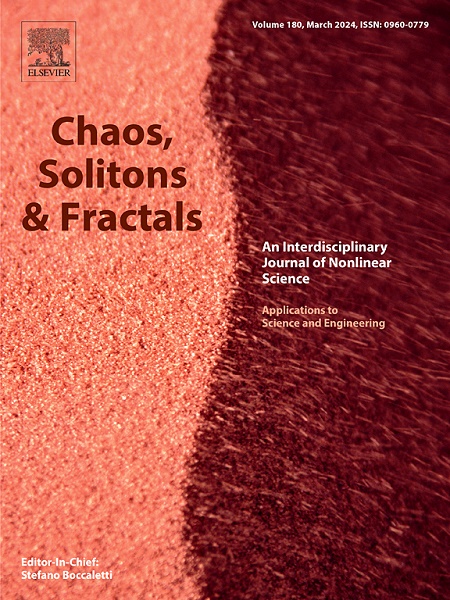Active disturbance reduction on non-homogeneous T-S fuzzy semi-Markovian jump systems and its application to secure digital signal communication
IF 5.3
1区 数学
Q1 MATHEMATICS, INTERDISCIPLINARY APPLICATIONS
引用次数: 0
Abstract
The concerns of disturbance reduction and tracking controller in non-homogeneous Takagi–Sugeno fuzzy semi-Markovian jump systems (T-SFSMJSs) are explained in this extensive effort. By elucidating the effects produced due to disturbances and delay in control input, it delivers a detailed understanding of the significances of disturbances and input delay on system execution. To be more specific, the performance of accurate tracking and accurate disturbance diminution are ensured by means of a generalized modified repetitive control (GMRC) strategy and an artificial neural network (ANN)-based disturbance estimator integrated with Astrom modified Smith predictor (ASP) technique. Particularly, the numerical instances deliver a comprehensive demonstration of how the suggested control procedure works in several scenarios and exhibit its efficiency under a variety of circumstances. These results are further reinforced by comparative investigation, which narrates the performance of the proposed method with that of former methods such as improved-equivalent-input-disturbance (IEID), truncated predictive control (TPC) and disturbance observer based control (DOBC) design, which have the limits in the case of mismatched multiple disturbances. From an application viewpoint, a novel encryption and decryption technique is suggested and numerically shown for securely transmitting digital signals over unprotected channels by utilizing T-S fuzzy chaotic semi-Markovian jump systems. Further, the experimental results demonstrate the effectiveness of the proposed algorithm and quality metrics of the proposed encryption method are analyzed. The suggested encryption algorithm’s key size is twelve times larger than the conventional key size, according to the key space measure and secure against different attacks.
求助全文
约1分钟内获得全文
求助全文
来源期刊

Chaos Solitons & Fractals
物理-数学跨学科应用
CiteScore
13.20
自引率
10.30%
发文量
1087
审稿时长
9 months
期刊介绍:
Chaos, Solitons & Fractals strives to establish itself as a premier journal in the interdisciplinary realm of Nonlinear Science, Non-equilibrium, and Complex Phenomena. It welcomes submissions covering a broad spectrum of topics within this field, including dynamics, non-equilibrium processes in physics, chemistry, and geophysics, complex matter and networks, mathematical models, computational biology, applications to quantum and mesoscopic phenomena, fluctuations and random processes, self-organization, and social phenomena.
 求助内容:
求助内容: 应助结果提醒方式:
应助结果提醒方式:


